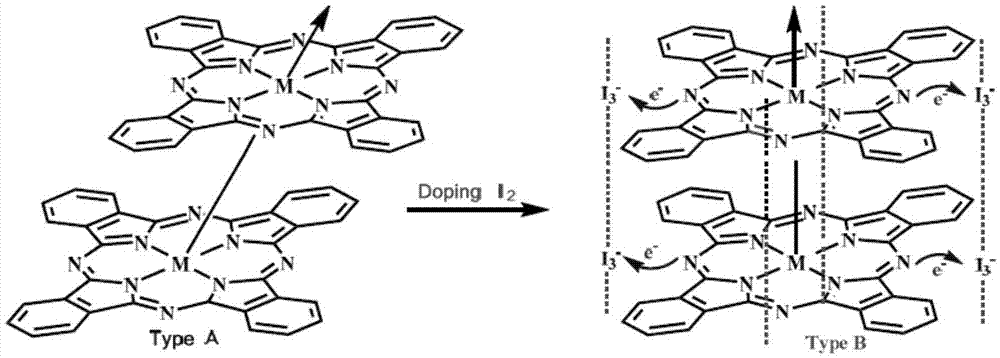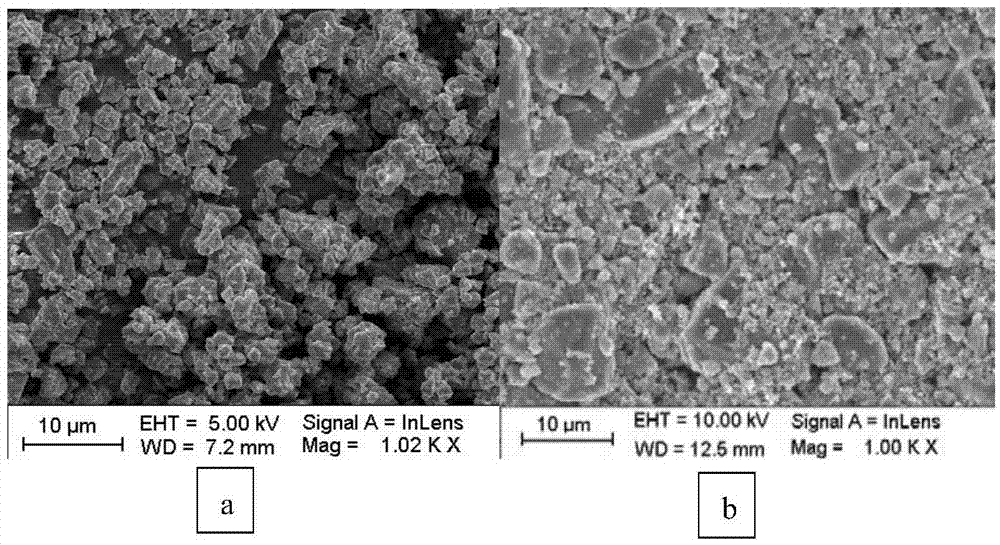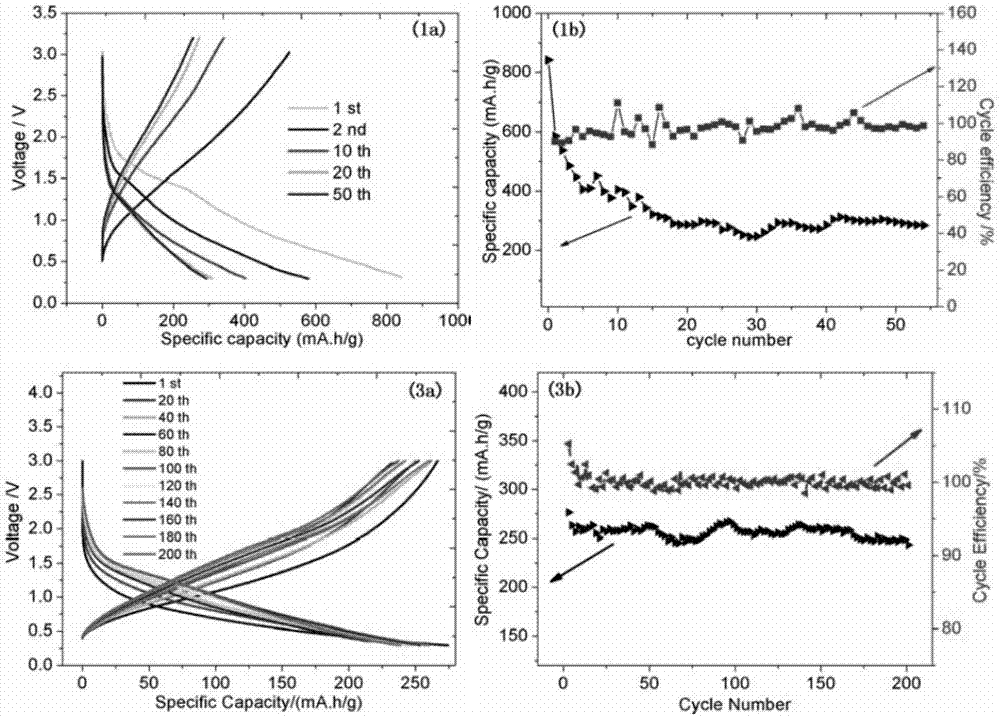Preparation method for high-capacity nanometer organic positive electrode material
A nano-organic and cathode material technology, which is applied in the direction of nanotechnology, nanotechnology, nanotechnology for materials and surface science, etc., can solve the problems of unfavorable cathode material performance, reduced electrode capacity, and difficulty in dissolution, so as to improve the dissolution rate and electrical conductivity, long cycle life, and low dissolution rate
- Summary
- Abstract
- Description
- Claims
- Application Information
AI Technical Summary
Problems solved by technology
Method used
Image
Examples
preparation example Construction
[0020] The invention provides a method for preparing a high-capacity nanometer organic positive electrode material, comprising the following steps:
[0021] Step 1: Put trimellitic anhydride, urea, nickel chloride hexahydrate and ammonium molybdate into a mortar and mix evenly, heat and dry in an oven, cool and grind, then add a saturated solution of hydrochloric acid / sodium chloride , heated to a slight boil, cooled, filtered, and dried.
[0022] Step 2: add the dried product after synthesis into sodium hydroxide solution to heat, cool the solution, mix it with deionized water, adjust the pH with hydrochloric acid solution, and filter and separate the product after complete precipitation.
[0023] Step 3: Wash the product obtained in Step 2 with deionized water and methanol several times, and then put it into a vacuum box for evaporation to remove a small amount of residual low-boiling impurities, and finally obtain a carboxyl-substituted phthalocyanine compound.
[0024] St...
Embodiment 1
[0027] Step 1: Put trimellitic anhydride, urea, nickel chloride hexahydrate and ammonium molybdate into a mortar with a mass ratio of 28:50:20:2, mix evenly, transfer to a beaker, and heat in an oven to 120°C and keep it for 1h (hour), until no more bubbles appear inside the beaker, then set the oven temperature to 150°C for constant temperature reaction for 4h, after cooling, crush the obtained black solid and add it to 3000mL of 1.0mol / L hydrochloric acid / In a saturated solution of sodium chloride, after boiling slightly, cool, filter, and dry.
[0028] Step 2: Add the dried product after synthesis into 3000mL of sodium hydroxide solution and heat to 110°C, react at this temperature until no ammonia gas is released; cool the solution, pour it into 5000mL of deionized water, and use 5.5mol / L hydrochloric acid solution to adjust the pH=3.0, let stand for 24 hours, and filter and separate after the product is completely precipitated.
[0029] Step 3: Wash the product obtaine...
Embodiment 2
[0032] Step 1: Put trimellitic anhydride, urea, nickel chloride hexahydrate and ammonium molybdate into a mortar with a mass ratio of 28:50:20:2, mix evenly, transfer to a beaker, and heat in an oven to 120°C and keep it for 1h until there are no more bubbles in the beaker, then set the temperature of the incubator to 150°C for a constant temperature reaction for 4h, after cooling, crush the obtained black solid and add it to 3000mL of 1.0mol / L hydrochloric acid / chlorination Saturated solution of sodium, after boiling slightly, cool, filter and dry.
[0033] Step 2: Add the dried product after synthesis into 3000mL of sodium hydroxide solution and heat to 110°C, react at this temperature until no ammonia gas is released; cool the solution, pour it into 5000mL of deionized water, and use 5.5mol / L hydrochloric acid solution to adjust the pH=3.0, let stand for 24 hours, and filter and separate after the product is completely precipitated.
[0034] Step 3: Wash the product obtai...
PUM
| Property | Measurement | Unit |
|---|---|---|
| Diameter | aaaaa | aaaaa |
Abstract
Description
Claims
Application Information
 Login to View More
Login to View More - R&D
- Intellectual Property
- Life Sciences
- Materials
- Tech Scout
- Unparalleled Data Quality
- Higher Quality Content
- 60% Fewer Hallucinations
Browse by: Latest US Patents, China's latest patents, Technical Efficacy Thesaurus, Application Domain, Technology Topic, Popular Technical Reports.
© 2025 PatSnap. All rights reserved.Legal|Privacy policy|Modern Slavery Act Transparency Statement|Sitemap|About US| Contact US: help@patsnap.com



